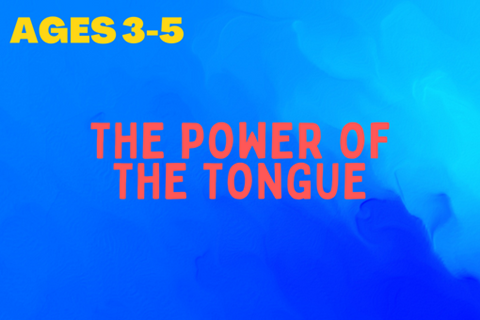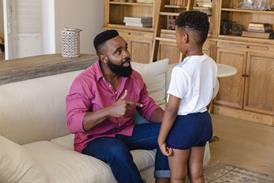
MEETING AIM: To discover that our words can have a positive and negative impact on others.
BIBLE PASSAGE: James 3:1–12
BACKGROUND: This is the fourth in a series this month on imagery in the epistles in the New Testament. Letters don’t usually form part of a curriculum for younger children, but there is lots for them to explore and begin to understand, so don’t shy away from passages like this one!
In this picture, James (thought by many to be Jesus’ brother) writes to Christians about the power of the words they say. He uses the tongue as a symbol of that language – something small that can make great boasts. The words we say are an indication of the person we are: “Can a fig-tree bear olives, or a grapevine bear figs?” (verse 12).
Younger children will familiar with the way that language can build up and tear down. The children may have spoken badly about others or have been spoken badly about themselves. Focus on the fact that as we follow Jesus, the Spirit helps us be more like him. This means that our words will be like Jesus’ words.
CIRCLE TIME
Gather the children together and share out any refreshments you have brought.
Chat together about what has happened this week. What events did they enjoy? Did anything make them sad this week? Ask the children what the nicest things someone has said to them this week. What have they said to others that has made those others feel happy and good?
INTRO ACTIVITY
You will need: family free-play equipment Set out all the free-play equipment you have around home and families. This could include furniture, kitchen play and play houses.
Let the children lead the play, exploring different home and family situations. Join in the children’s play, allowing them to direct you in what you should do. If the children are happy to do so, talk about families and the different things family members say to each other. Be aware that not all family situations are happy nor are all words spoken positive. Be sensitive when discussing this with your group.
BIBLE STORY
You will need: large sheets of paper (lining paper is ideal); art and collage materials; Bible; card versions of a shield and sword Spread out your large sheets of paper and draw the outline of a head on each one. If you have a small group, all work together on one outline; if you have lots of children, invite smaller groups to work together.
Encourage the children to decorate a face with eyes, nose, mouth, hair etc. Talk about what the tongue does – speak, taste, whistle – and draw a tongue on the face.
Show your Bible to the children and explain that, in the New Testament, there are lots of letters written to Jesus’ friends to help them to follow God’s way and tell others about how wonderful Jesus is!
Show the children James and say that this letter was written by a man called James, who might have been Jesus’ brother. Read James 3:1-12. Look at the mouth and tongue on your picture of a face. Ask the children what kind of things people say to each other; are they all kind things or can they make you feel sad too?
Ask why James might have been warning Jesus’ friends about the nasty things the tongue might help them say. Chat together about the times when we need to be kind and patient and gentle, and how our words can make people feel better. If we follow Jesus, then we have the Holy Spirit to help us be more like Jesus. And that includes knowing what to say to people.
CHATTING TOGETHER
Ask the children these questions, encouraging everyone to take turns in contributing:
- What is your favourite part of this story from the Bible?
- What is the most important part of this story?
- How easy is it to say nice things to people, even when they are being horrible to us?
- Have you ever said mean things to someone? Why? How did you make things better?
- How can we become more like Jesus?
CREATIVE RESPONSE
You will need: free-play equipment from ‘Intro activity’; volunteers from your church leadership (if you’ve done other sessions in these series, try to get different volunteers if possible)
Set out your free-play equipment from ‘Intro activity’. As a group, think of a couple of different situations that the children might find themselves in where their words are important. This might be when they are disagreeing with a friend at play group, or when their brother or sister is annoying them at home. Use the play equipment to help the children pretend they are in one of those situations. What different things can they say? What are they best things to say in these situations? Explore with the children how those things can make them feel.
Invite your volunteers to share some- thing about their own story, concerning when they had to make a choice about the words they said to someone. Encourage them before the session to think about how they might talk about this with the youngest members of the church family.
PRAYER
You will need: your volunteers from ‘Creative response’
Invite everyone to stand in a circle. Say a simple prayer thanking God giving us the best words to say and thanking him for the Holy Spirit who helps us be more like Jesus. Pray specifically for any of the issues the children raised in ‘Creative response’.
Ask the volunteers from your church leadership to pray for the children too. Having those who lead your church pray for them can be a powerful experience for the children – it shows that they are valued and important in the life of the church. Invite them to pray for the children; they could ask God to help the children use their words to be kind and build people up, to say Jesus’ words to each other!
Supporting documents
Click link to download and view these files1024355.pdf
PDF, Size 0.42 mb






































